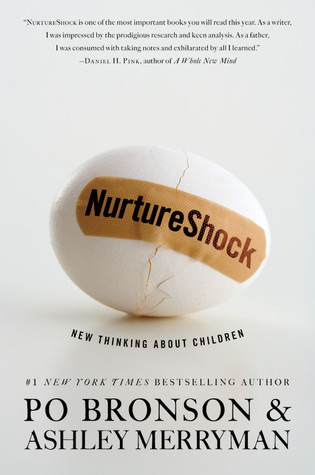Definition of a goal: A goal is a specific, measurable, and time-bound end toward which you direct specific effort until achieved!
Success is the ability to:
- Recognize opportunity
- Form plans and strategies that leverage opportunities
- Develop the necessary skills needed to execute those strategies
The difference between what one person and another achieves depends more on goal choices than on abilities. Each decision affects what you become.
The direction of your life changes the instant you decide what goals you want to pursue.
Goals are the seeds of success--you become only what you plant. The quality of the harvest is a direct reflection of the quality of the seeds (decisions).
"Everything counts!" Every thought, decision, and action either moves you closer to or further from your goals.
Goal Rule #2: STAY FOCUSED
Focus= Follow one course until successful!
The most important aspect of focus is single-mindedness.
The moment you focus on a goal, your goal becomes a magnet, pulling you and your resources towards it.
Never stop thinking about your goal.
Some give up their dreams when they have almost reached the goal; while others, on the contrary, obtain a victory by exerting, at the last moment, more vigorous effots than every before.
Goal #3: WRITE YOUR GOALS
Goals not written down fall victim to the "out of sight...out of mind" phenomenon. For goal setting to have any value, goals must be written down. The process of writing and revising a goal continuously forces you to make a commitment because once it is written, you have made an investment.
Ask the six important goal setting questions:
- Who will be involved in helping you achieve this goal?
- What is the goal? What specifically do you want to accomplish?
- Where are you now in relation to this goal?
- When do you expect to achieve this goal?
- How will you accomplish this goal?
- Why do you want to achieve this goal?
Rule #4: PLAN THOROUGHLY
Planning before taking action helps you to do things better, faster, and cheaper!
Planning...
- Promotes focus--helps cut through the clutter
- Coordinates efforts--acting as a catalyst for new insights and ideas
- Provides standards--helps you measure progress
- Prepares the planner
- Reveals roadblocks
- Stimulates thinking
- Offers an exit plan
Goals end up in one of three conditions:
- Victory or
- Watered down or
- Failure
Rule #5: INVOLVE OTHERS
It is important to acquire knowledge from others and apply it appropriately. Surround yourself with good people who possess solid experience.
Goals mean growth, and growth requires new knowledge. How? Read books, ask questions, attend seminars, observe, etc. Choose a mentor and/or a personal board of directors. Involving others provides an additional level of accountability which is mandatory for success.
Rule #6: WELCOME FAILURE
Failure has an ulterior motive...not ot get you to quit, but to stop long enough so that you may learn something.
Failure measures your personal investment in a goal--it is a test of character, commitment, and courage.
An occasional step back to regroup and reload can, and often does, position you for several more steps forward.
There will always be tension between your enthusiasm for your goal and the fear of failing to achieve it. Rather than surrender to the fear, stay focused, "super glue" your commitment, and persevere.
Rule #7: TAKE PURPOSEFUL ACTION
In real estate it is location, location, location. In goal-setting it is ACTION, ACTION, ACTION. Yet, the action must be purposeful.
Maximum productivity is working economically, it is managing time and resources effectively.
Don't just pursue your goal...inhabit it. Wear it, act it, live it, taste it! Get committed--take action.
You must take action because all success comes down to execution.
Rule #8: INSPECT WHAT YOUR EXPECT
Change is inevitable--Growth is optional.
ATTENTION INCREASES PRODUCTIVITY!---evaluate progress.
Inspection has a dual purpose:
- Inspection tells you where you are in relation to where you want to be.
- It tells you how you are doing in the process of pursuing your goals.
If you can't measure it, you can't manage it.
Rule #9: REWARD YOURSELF
While pursuing a goal, you build integrity, character, heart, discipline making the journey itself a reward. Goals are generators of VALUE, often because of what you learned and became en route.
3 Cs of achieving goals: Commitment, Concentration, Courage
Recognition celebrates achievement and builds confidence and provides an incentive to further achievement. Make rewarding yourself standard protocol! Recognize your own achievement.
Principles for rewarding yourself:
- Always reward your major achievements
- Reward yourself for intermediate steps and victories--reward yourself daily for small accomplishments
- Make rewards commensurate with the accomplishment
- Ensure that rewards are personal and sentimental
"You get what your reward. Be clear about what you want to get and systematically reward it." --Bob Nelson
Rule #10: MAINTAIN PERSONAL INTEGRITY
Your biggest concern is not your skill, ability, or intelligence--it's your COMMITMENT.
The "Promised Land" is for those who exercise personal integrity. Personal integrity means maintaining a commitment to your commitments. Saturate your goal with a heavy dose of personal integrity.
Values lay the foundation for your goals; goals lead to the fulfillment of your mission; your mission leads to the realization of your life's work--your legacy.
Authors contact info:
Phone: 1.877.462.5748
Email: info@goalsguy.com
Website: www.EverythingCounts.com
A large part of your success will come from sheer tenacity!







